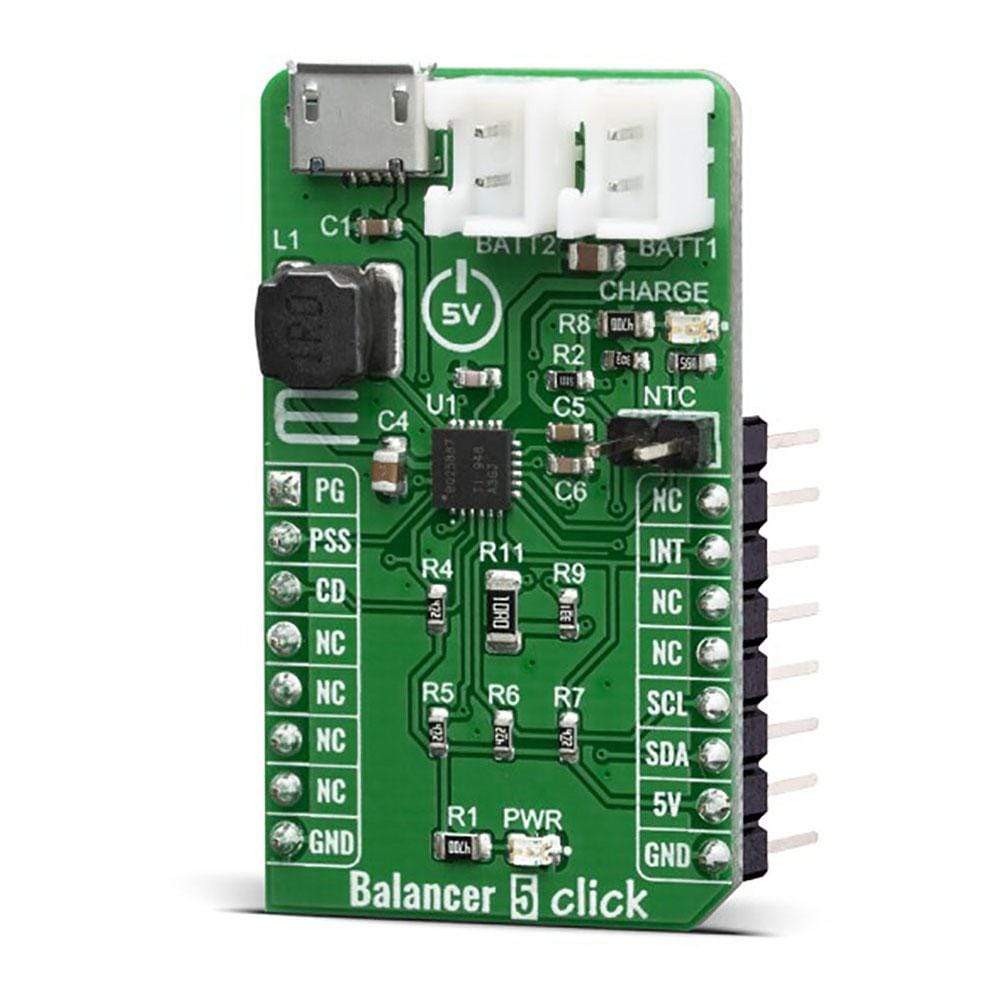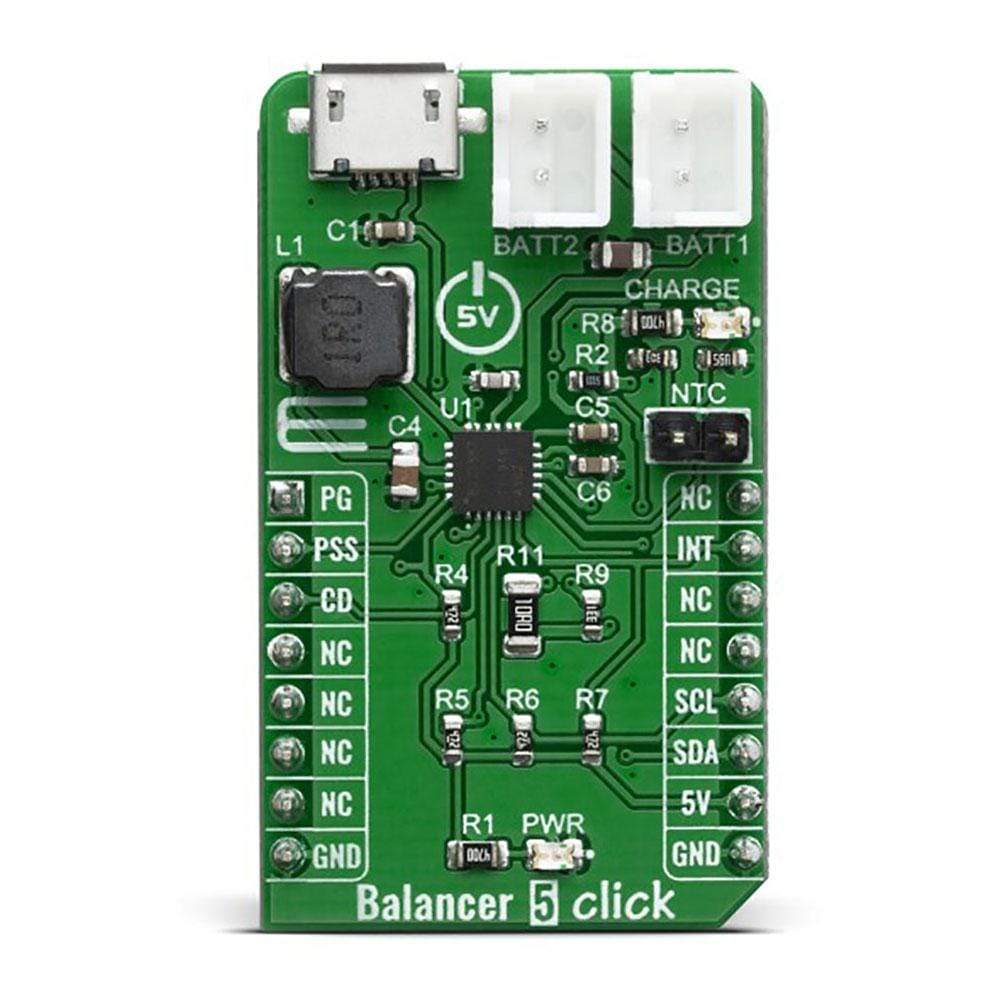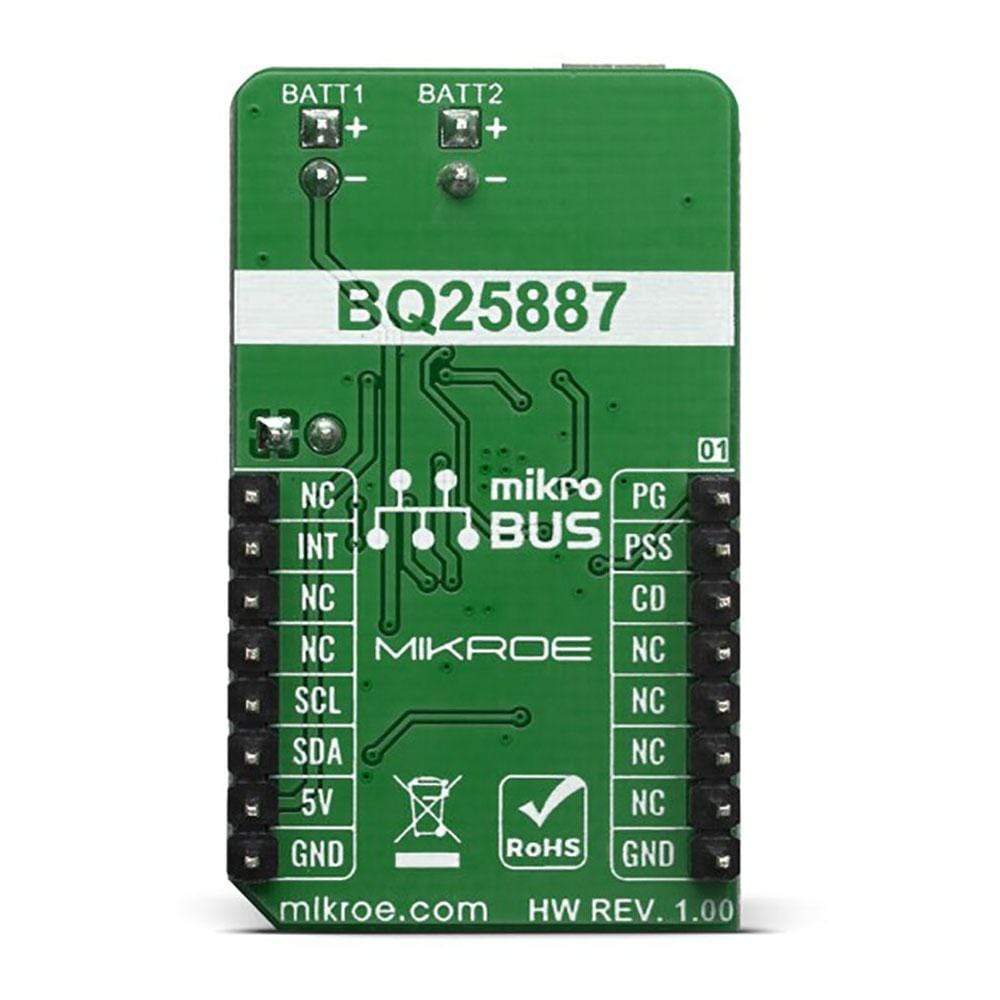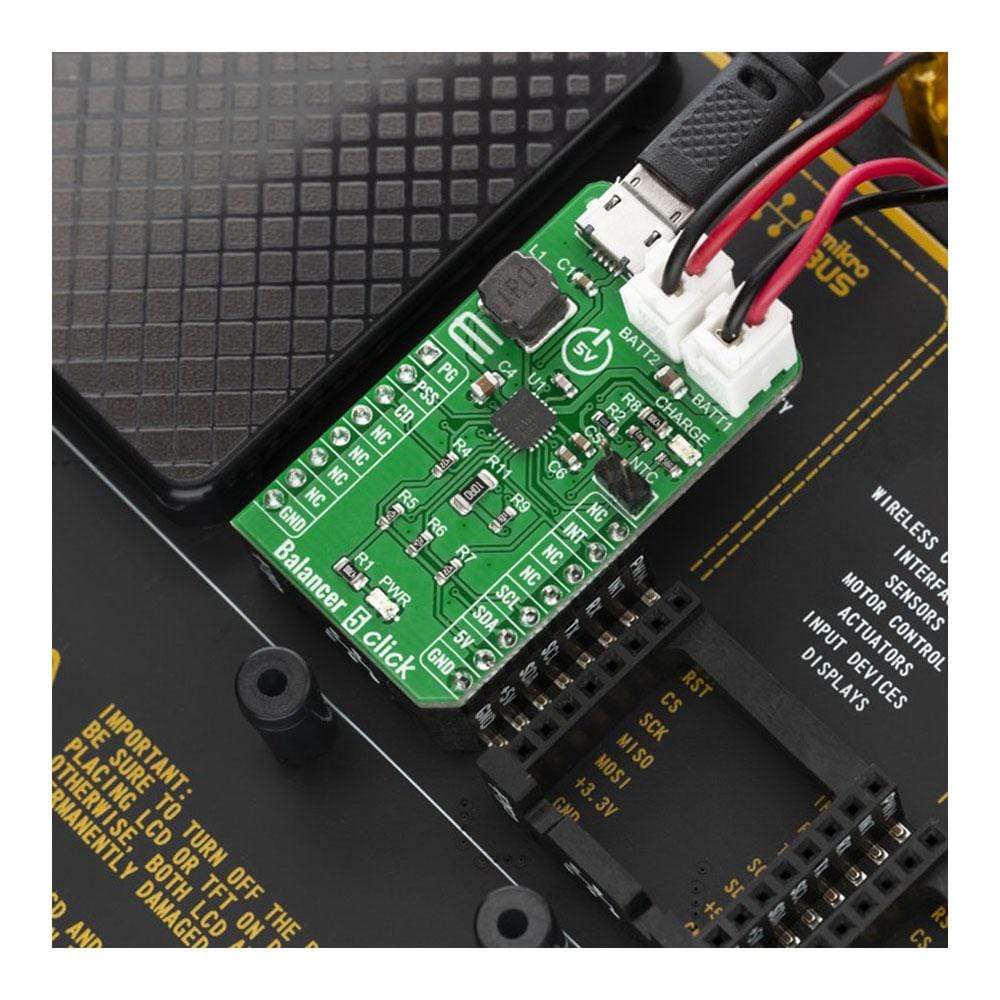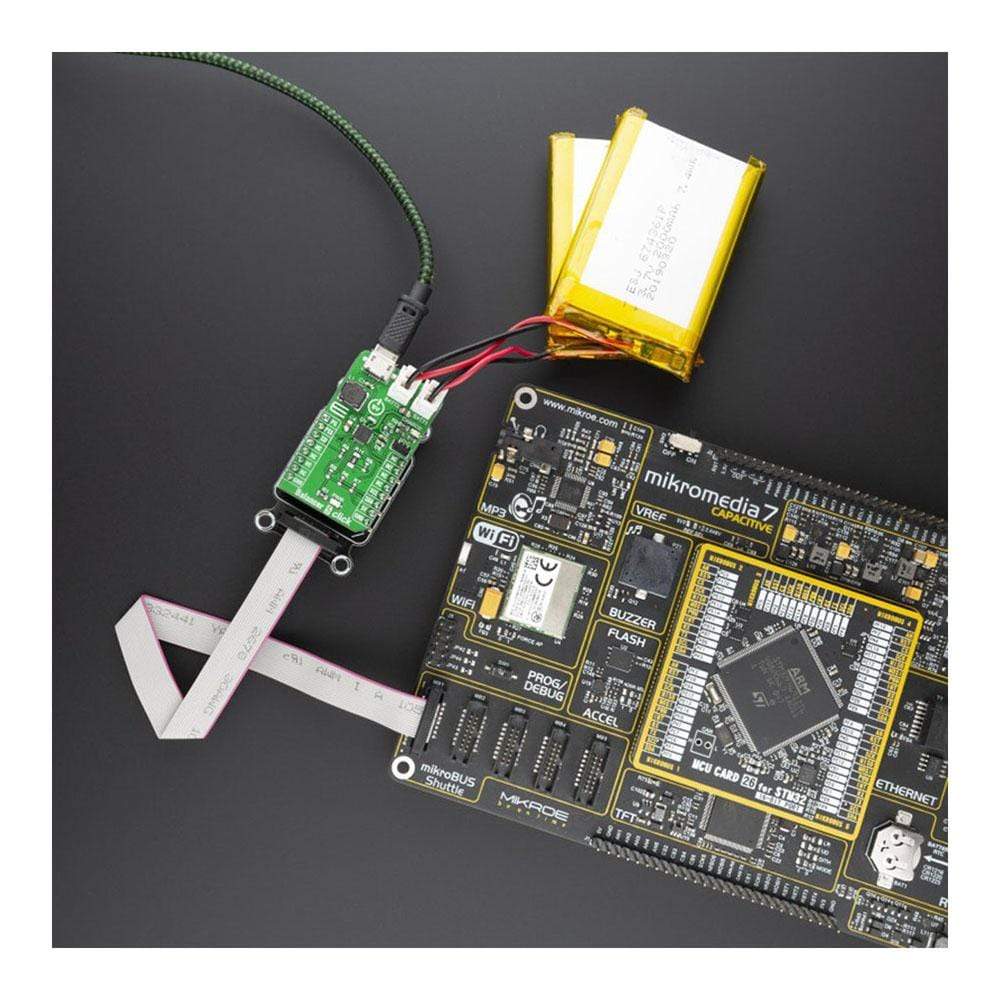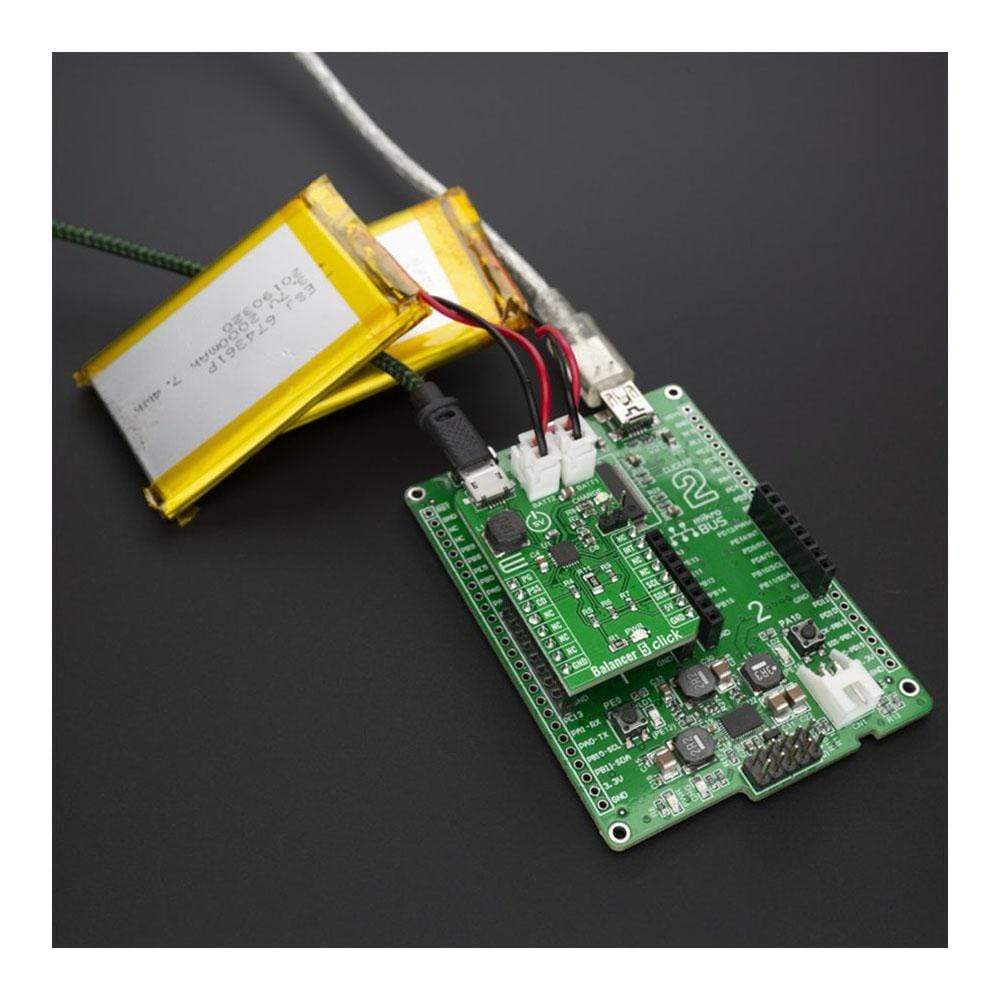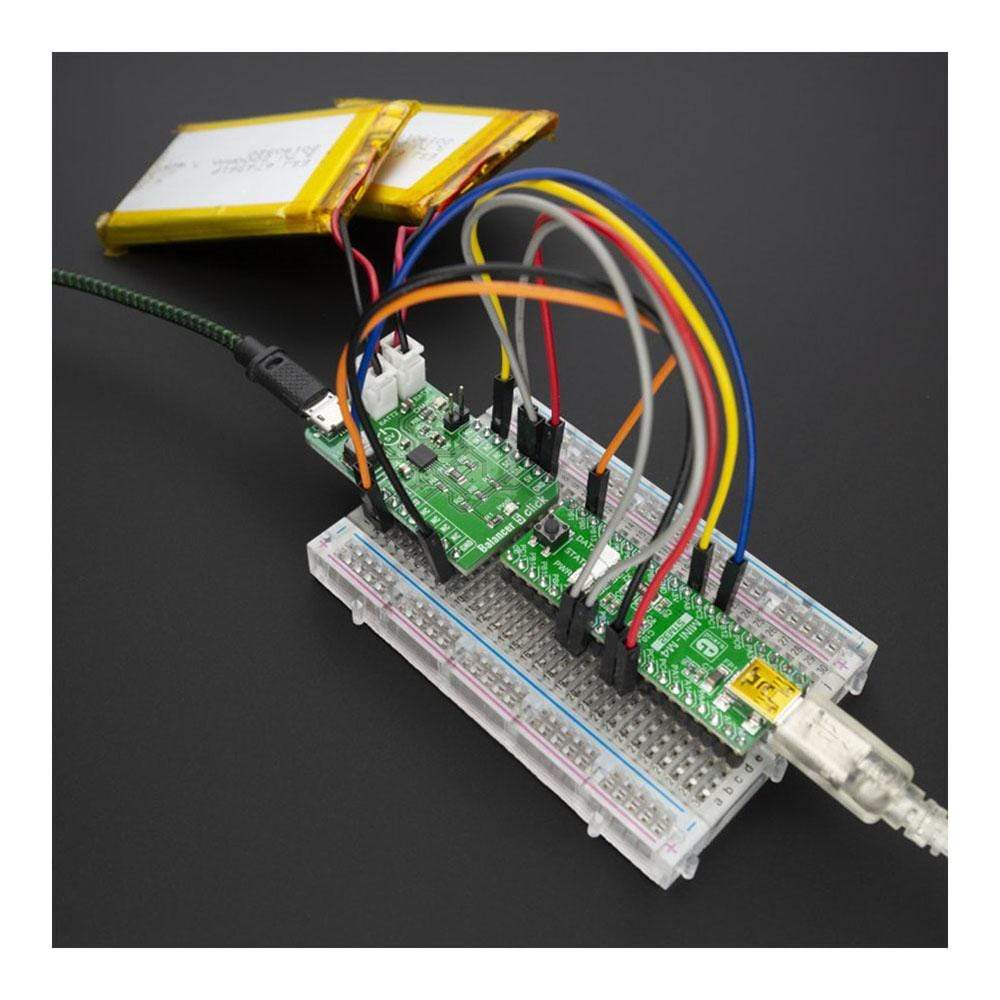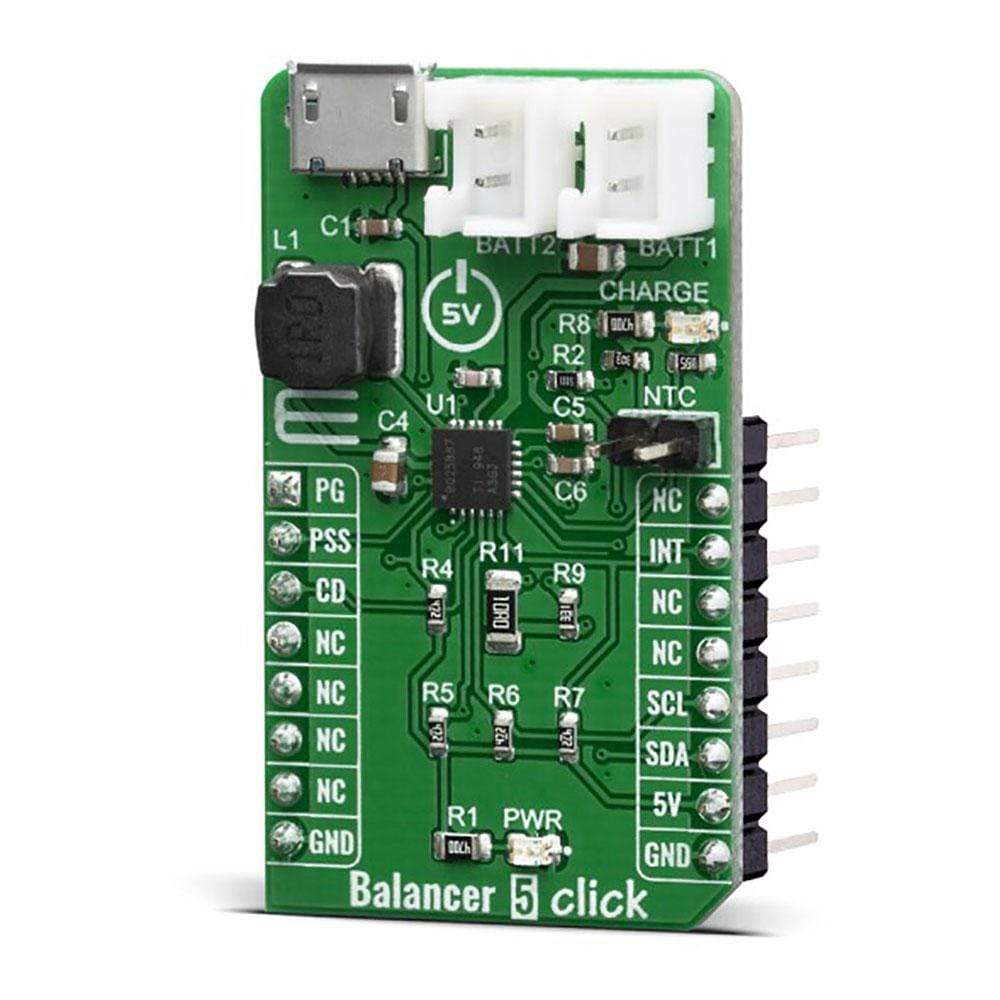
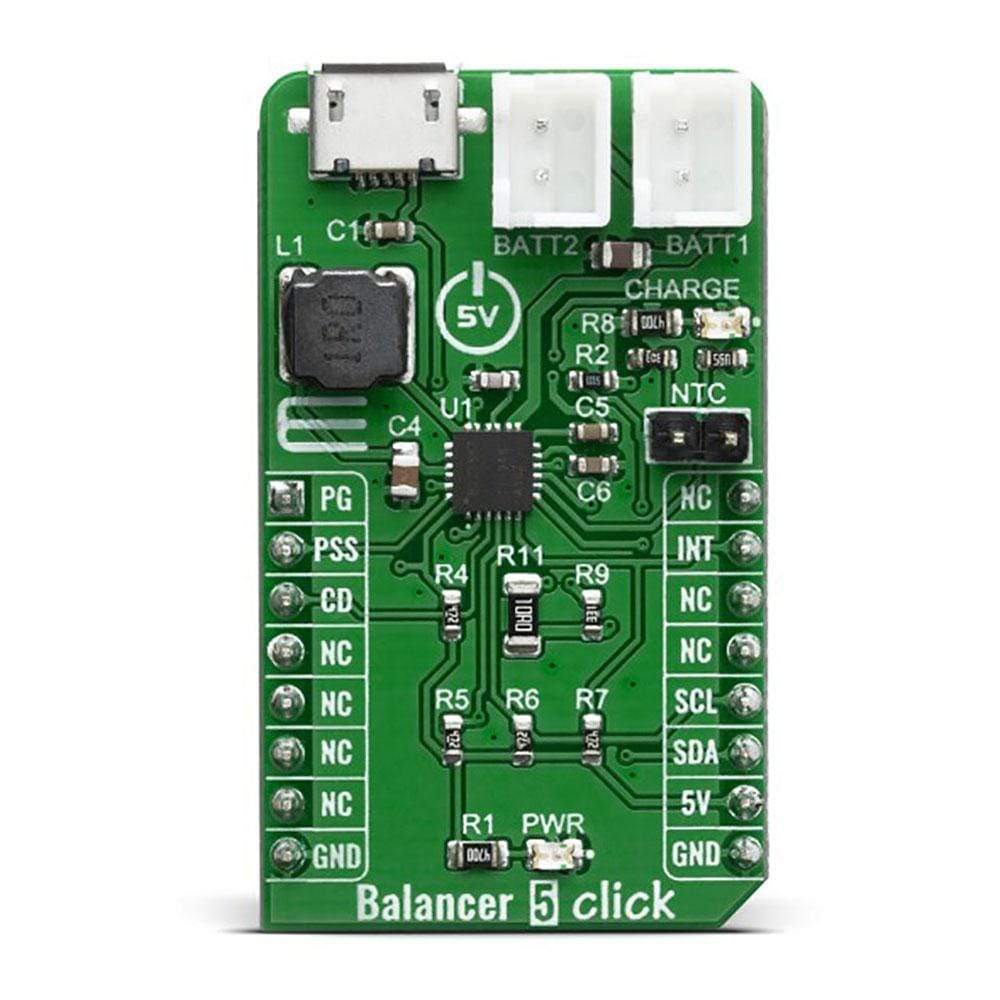
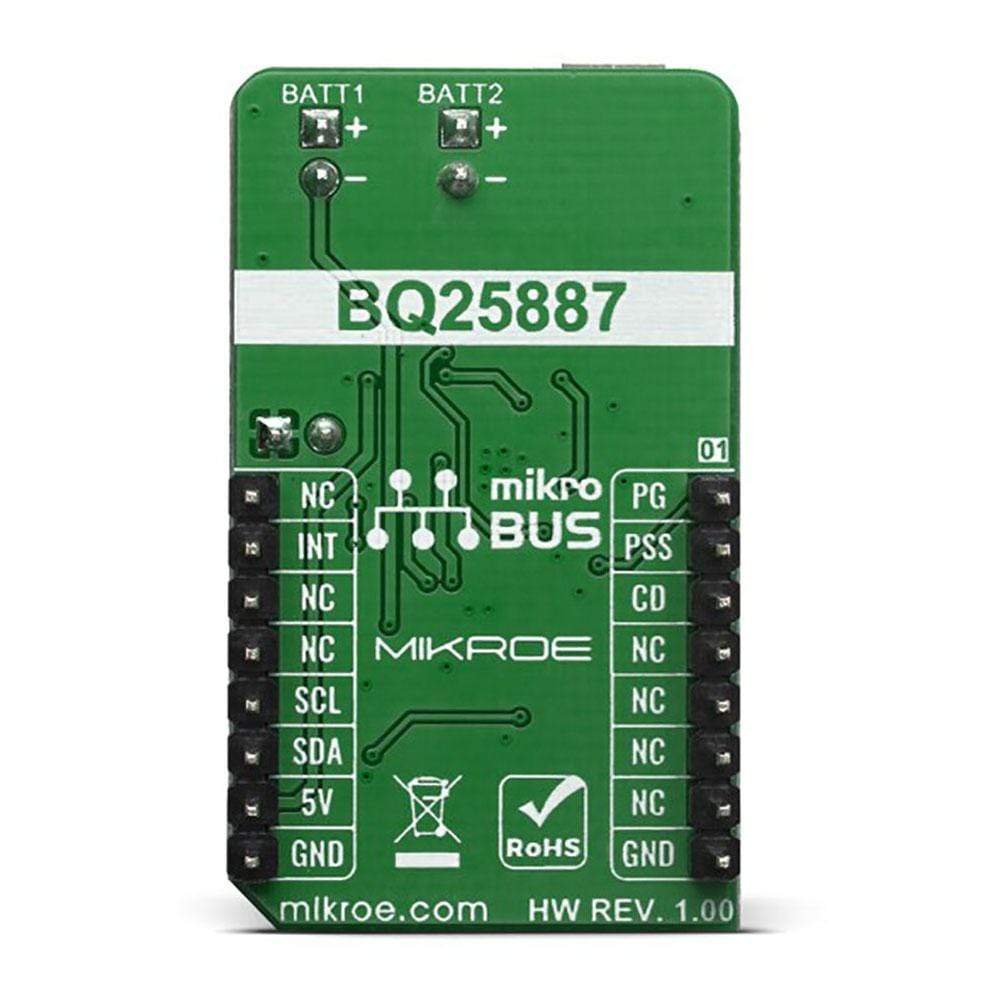
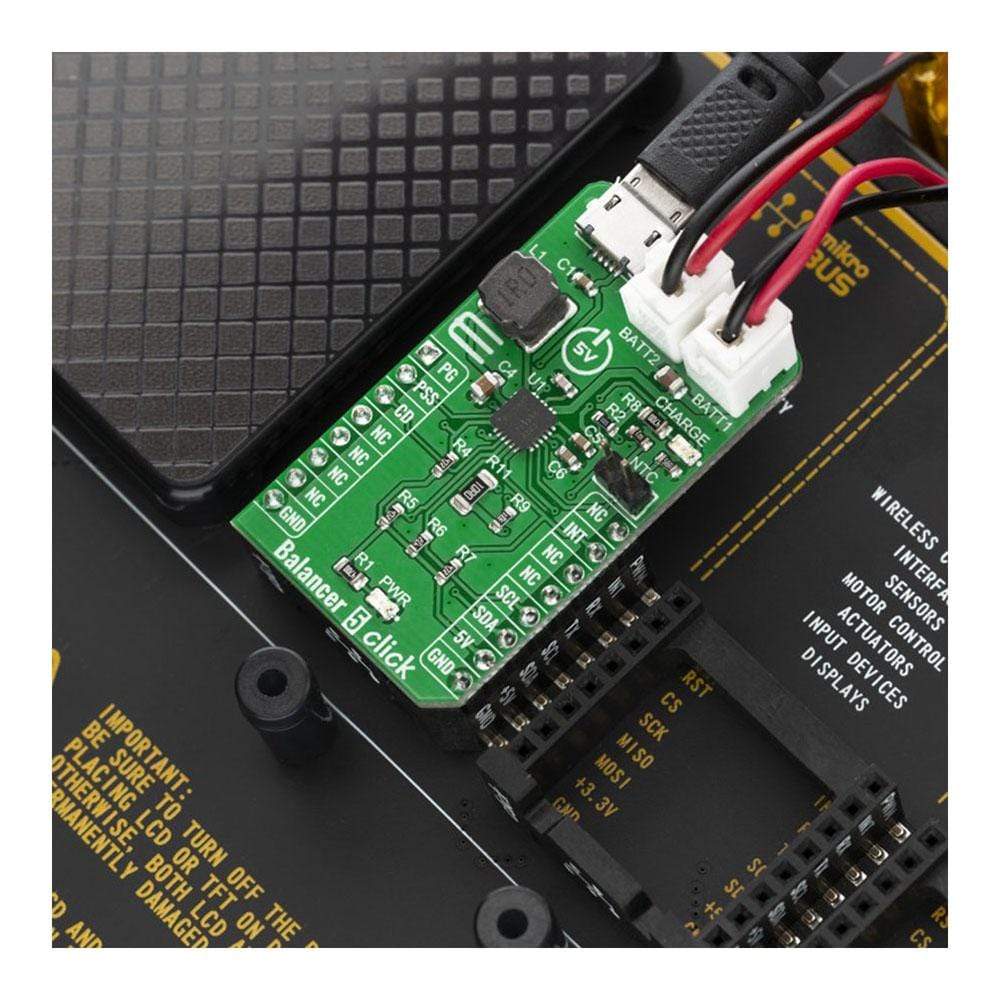
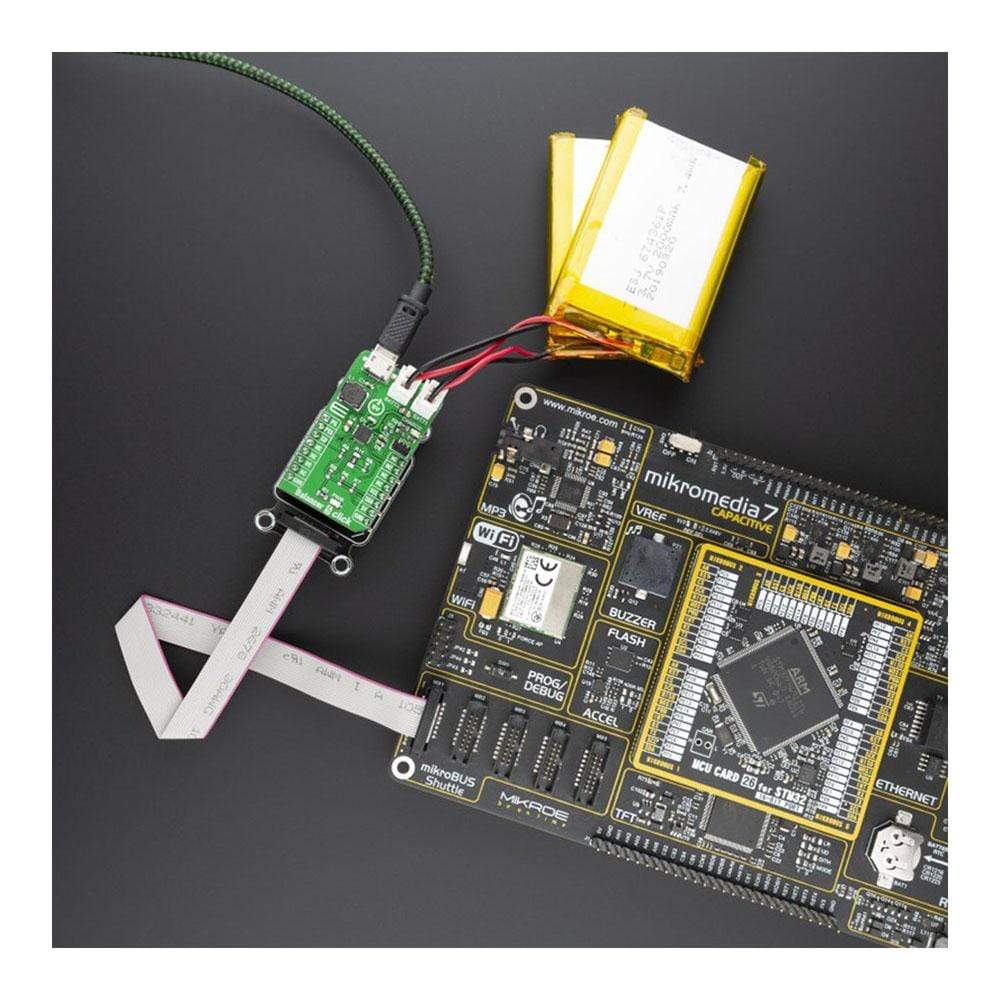
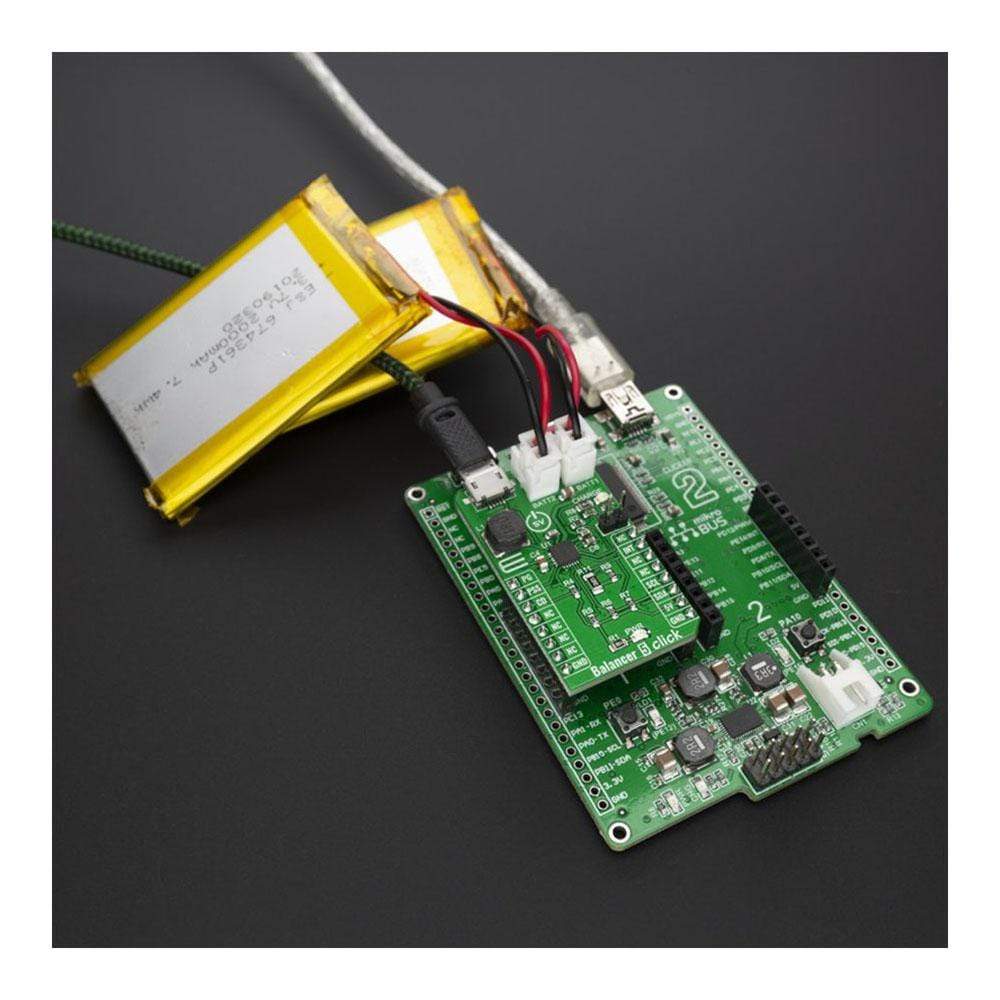
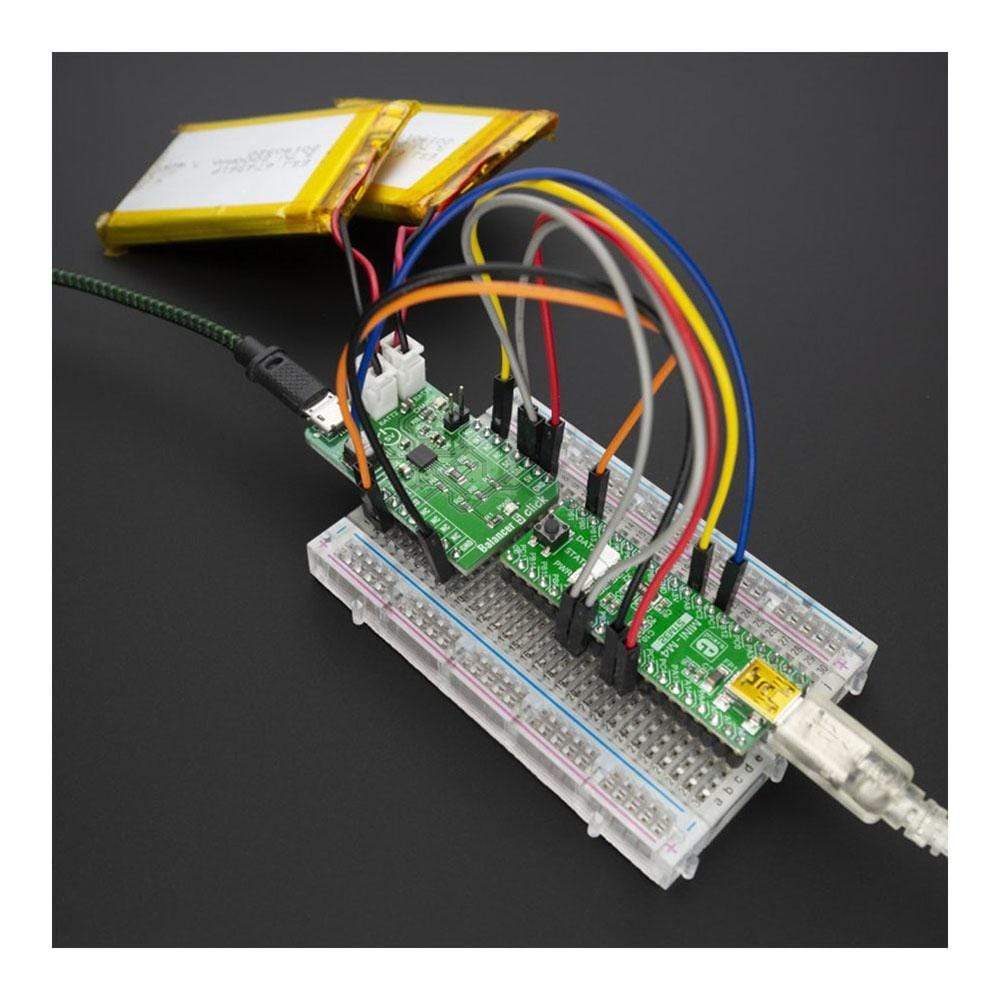
Overview
The Balancer 5 Click Board™ is an intelligent 2-cell Li-Ion battery charger, system power manager, and battery fuel gauge Click Board™.
The Balancer 5 Click Board™ is based on a BQ25887 controller which has some extra features enabling charging without too much hassle. As a system power distributor, it can supply up to 3.3A to a connected battery. By utilizing an externally connected USB power supply, it can charge a 2-cell Li-Ion battery. A dedicated power management IC with optimized smart power control allows very efficient management of the available power.
Downloads
Das Balancer 5 Click Board™ ist ein intelligentes 2-Zellen-Li-Ionen-Akkuladegerät, ein System-Energiemanager und ein Click Board™ mit Akku-Ladezustandsanzeige.
Das Balancer 5 Click Board™ basiert auf einem BQ25887-Controller, der über einige zusätzliche Funktionen verfügt, die ein Aufladen ohne allzu großen Aufwand ermöglichen. Als Systemstromverteiler kann es eine angeschlossene Batterie mit bis zu 3,3 A versorgen. Durch die Verwendung eines extern angeschlossenen USB-Netzteils kann es eine 2-Zellen-Li-Ion-Batterie aufladen. Ein dedizierter Energieverwaltungs-IC mit optimierter intelligenter Energiesteuerung ermöglicht eine sehr effiziente Verwaltung der verfügbaren Energie.
| General Information | |
|---|---|
Part Number (SKU) |
MIKROE-3853
|
Manufacturer |
|
| Physical and Mechanical | |
Weight |
0.02 kg
|
| Other | |
Country of Origin |
|
HS Code Customs Tariff code
|
|
EAN |
8606018719495
|
Warranty |
|
Frequently Asked Questions
Have a Question?
Be the first to ask a question about this.

